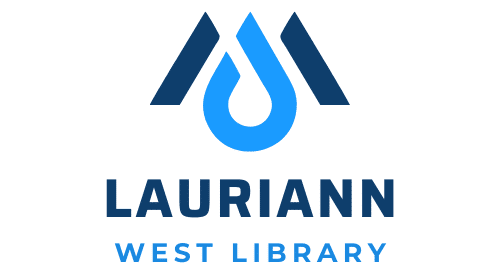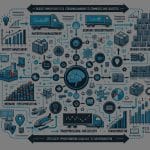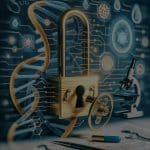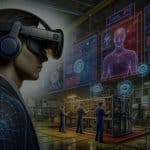Today, the integration of Internet of Things (IoT) with sensors is revolutionizing industries worldwide. IoT sensors have emerged as a game-changer for various sectors such as manufacturing, agriculture, water management, and more. The advent of these smart sensors is ushering in a new era of precision monitoring, offering improved quality control, enhanced efficiency, and optimized productivity. This article will delve into the significant ways IoT sensors are advancing precision monitoring in industrial processes.
The Role of IoT Sensors in Industrial Monitoring
IoT sensors play a pivotal role in industrial monitoring systems. The data these sensors collect in real-time enables industries to monitor their operations with remarkable precision. Let’s look at how these sensors work and the benefits they bring to industrial monitoring.
Also to read : How Is Mixed Reality Technology Changing the Game in Remote Expert Assistance?
IoT sensors are essentially small, internet-connected devices that collect and transmit data from the physical environment. These sensors can monitor various parameters such as temperature, humidity, light, motion, and more. With an industrial context, these sensors can help monitor machinery, track inventory, control environmental conditions, and much more.
The real power of IoT sensors comes from their ability to connect to a network and transmit the collected data for analysis. This capability allows for real-time monitoring of industrial operations. By assessing this data, businesses can gain valuable insights to improve their processes, enhance efficiency, and prevent potential issues before they occur.
Also to read : What Role Does AI Play in Detecting and Blocking Phishing Attacks?
IoT Sensors in Manufacturing
Manufacturing is one of the industries that has greatly benefited from the implementation of IoT sensors. These sensors are now essential components of modern manufacturing setups, contributing to improving the quality and efficiency of the production process.
IoT sensors in manufacturing can monitor various aspects of the production process in real-time. They can keep tabs on equipment performance, detect faults or malfunctions, and monitor environmental conditions such as temperature and humidity. This data is invaluable for maintaining the quality of manufactured products.
For example, sensors can monitor the temperature in a furnace and send an alert if it gets too high. This prompt notification allows for immediate action, preventing possible damage to the product or equipment. Similarly, sensors can monitor the performance of machinery. If a machine is not operating at optimum efficiency, the sensor data can help identify the problem and prompt corrective action.
IoT Sensors in Agriculture
Agriculture is another sector where IoT sensors are making significant strides. These sensors are helping to transform traditional farming practices into precision agriculture, leading to optimized crop yield and improved farming efficiency.
IoT sensors in agriculture can monitor crucial parameters such as soil moisture, temperature, and nutrient levels. This data is vital for making informed decisions about irrigation, fertilization, and pest control. For instance, soil moisture sensors can inform farmers when the soil is too dry, indicating the need for irrigation. Similarly, sensors can monitor crop health in real-time, alerting farmers to potential disease or pest infestations.
Moreover, IoT-enabled systems in agriculture can help track and predict weather conditions. Such predictive analysis can aid farmers in making preemptive decisions to protect their crops from adverse weather conditions.
IoT Sensors in Water Management
Water management is another crucial area where IoT sensors are making a substantial impact. These sensors are enabling a more sustainable and efficient management of water resources, which is of paramount importance considering the growing global water crisis.
IoT sensors can monitor water quality in real-time, tracking parameters like pH level, turbidity, temperature, and more. This real-time monitoring can help detect contamination early, enabling prompt action to prevent health hazards. For instance, sensors can detect increased levels of harmful substances in a water supply, triggering an immediate alert.
Additionally, IoT sensors can play a significant role in managing water usage in industries. For example, sensors can monitor the flow rate of water in pipes, helping to identify leaks or wastages. This real-time information can aid in reducing water waste, contributing to more sustainable industrial practices.
IoT Sensors: The Future of Industrial Monitoring
The integration of IoT sensors into industrial processes is becoming increasingly prevalent. These sensors offer a level of precision and efficiency in monitoring that was previously unattainable. As technology continues to advance, it is clear that IoT sensors will play an even more pivotal role in shaping the future of industrial monitoring. This evolution will no doubt lead to more smart, efficient, and sustainable industrial operations, ultimately contributing to a better world.
IoT Sensors and Big Data Analysis
The convergence of IoT sensors and big data analysis is bringing about a transformative change in industrial monitoring. IoT sensors generate a vast amount of real-time data, which when analyzed using big data analytics, can generate actionable insights for decision making.
Big data analytics involves the processing of raw sensor data to identify patterns, correlations, and trends. In an industrial setting, this might involve analyzing sensor data from machinery to predict potential maintenance needs or using real-time data from production lines to optimize operational efficiency. For example, outlier detection methods can be used to identify abnormal patterns in sensor data that may indicate a malfunctioning machine.
The combination of IoT sensors and big data analytics can also greatly enhance supply chain management. Sensors can track the movement and condition of goods in real time throughout the supply chain, providing valuable data to optimize logistics and inventory management. With the help of big data analytics, industries can predict demand trends, streamline their operations, and make strategic decisions to improve their overall efficiency and productivity.
Integration of machine learning with IoT sensor data adds an additional layer of sophistication to industrial monitoring. Machine learning algorithms can learn from sensor data patterns and make predictive analyses, which can be instrumental in preemptive decision making. For instance, predictive maintenance, a technique that predicts when equipment could fail, allows industries to schedule maintenance proactively, thereby reducing downtime and increasing efficiency.
Conclusion: The Indispensable Role of IoT Sensors in Industrial Monitoring
The impact of IoT sensors on precision monitoring in industrial processes is undeniable. By providing accurate, real-time data, these sensors allow industries to monitor their operations with unparalleled precision, leading to enhanced quality control, operational efficiency, and productivity.
The integration of IoT sensors with technologies such as big data analysis and machine learning is amplifying this impact, offering industries deeper insights into their operations and facilitating strategic, data-driven decision making. As industries across the globe increasingly adopt IoT-based systems, the role of IoT sensors in industrial monitoring will only become more central.
The potential applications of IoT sensors are vast and still being explored. While their current usage in industries such as manufacturing, agriculture, and water management is revolutionary, we are only scratching the surface of what is possible. As the technology continues to evolve, we can expect an even greater transformation in industrial monitoring, paving the way for smarter, more efficient, and more sustainable industrial processes.
As we navigate through the year 2024, it becomes clear that the era of Internet of Things and precision monitoring is here to stay. The fusion of IoT sensors, real-time data, and advanced data analysis methods is set to redefine the future of industrial operations, leading us towards a more sustainable and efficient industrial landscape.











